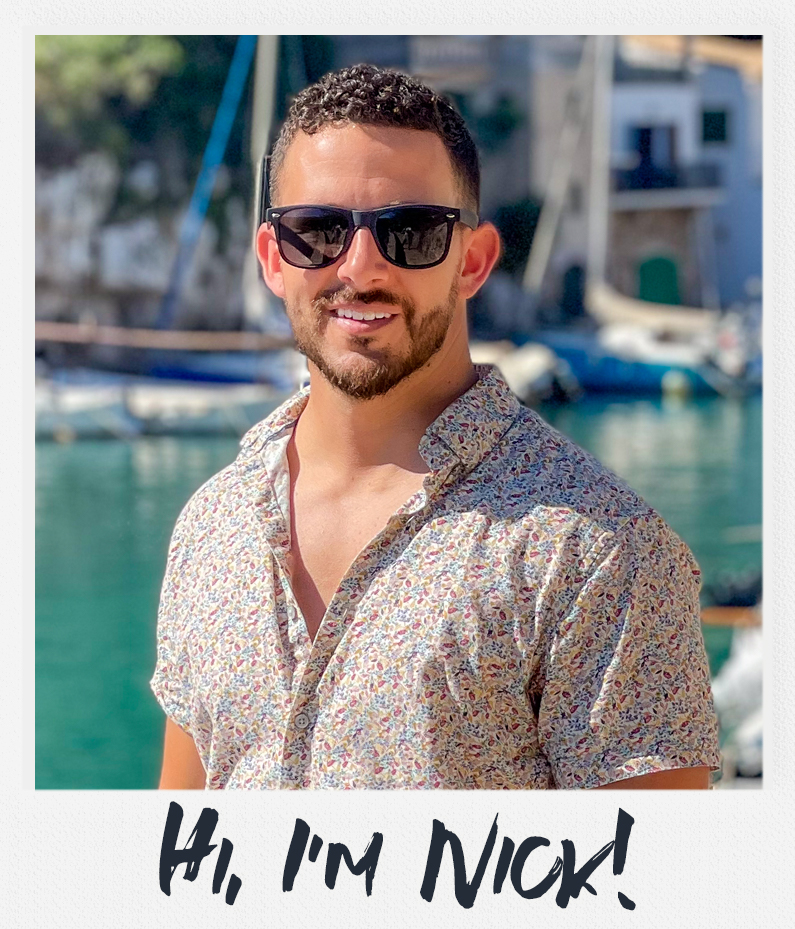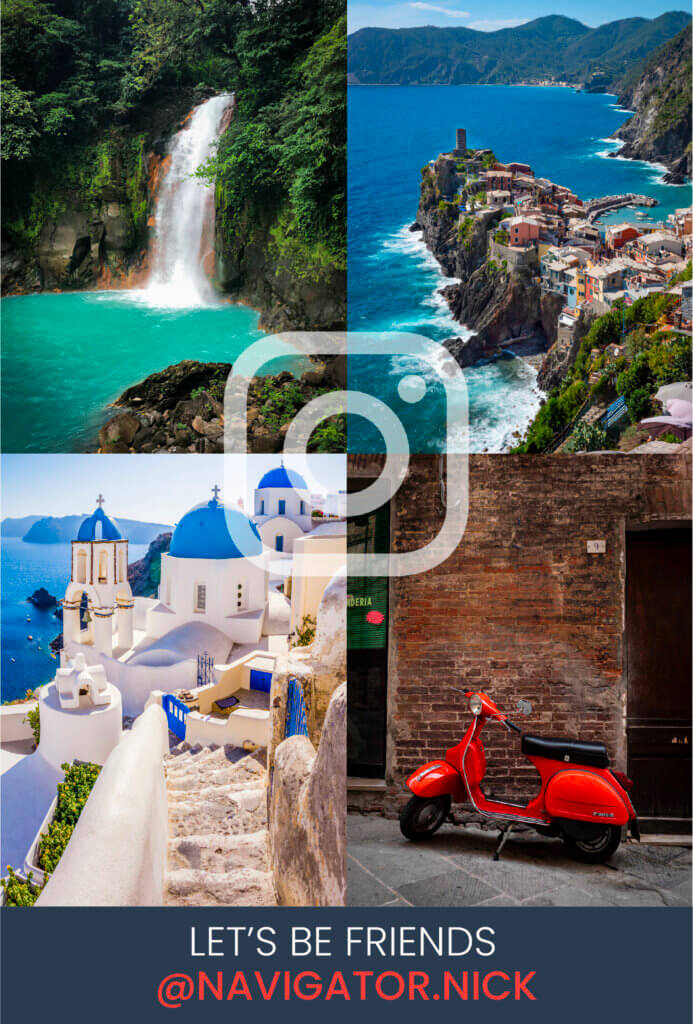Mallorca, a part of the Balearic Islands off the coast of Spain is deeply rooted in its rich history, diverse influences, and strong sense of community. Mallorcans are known for their warm hospitality and strong family ties.The island’s cuisine reflects its Mediterranean heritage, with a focus on fresh seafood, olive oil, and locally sourced ingredients!
Looking for a good time?
How about a tour of the old town while enjoying spanish tapas from a local?!
Discover Mallorca’s most beloved neighborhoods while indulging in the mouth-watering flavors of Spanish cuisine on a guided walking tour. Sip on iconic Spanish drinks like sangria, vermouth and cava.
Disclaimer: This post contains affiliate links. If you book or buy something through these links, I earn a small commission to keep this website going (at no extra cost to you) so its a win-win!
What are Tapas?
Tapas are a cornerstone of Spanish cuisine and culture, consisting of a variety of small, flavorful dishes that are typically enjoyed in social settings. The word “tapas” originates from the Spanish verb “tapar,” meaning “to cover.” Traditionally, tapas were slices of bread or meat used to cover glasses of wine to keep flies out, but they have since evolved into a diverse and sophisticated culinary tradition.
Tapas are more than just a meal; they represent a way of life in Spain. The practice of “tapear” (going out for tapas) is a beloved tradition where friends and family gather in bars and taverns, moving from place to place, sampling different dishes, and enjoying each other’s company. This culinary custom fosters a sense of community and celebration, making it an integral part of Spanish culture.

Palma Old Town Tapas Food Crawl & Walking Tour Description
The Palma Old Town Tapas Food Crawl Tour has been designed to be a fun and an informative experience which you will enjoy in the company of your local tour guides who will share tips and insider knowledge as well a passion for this city.
Stroll around the old town passing by many interesting sights, such as the monument area where the cathedral and Almudaina palace are to be found.
Visit the municipal market and learn about the local produce of vegetables and fish. Then head to the old fishermen’s area, the most popular tapas area, and learn more about this famous tradition. Enjoy small tastings of typical local products such as confectionary, local cold meats, and digestif liquors before taking one longer stop for a tapa and a drink.
With a maximum of nine people per tour, you are assured of personal attention and a great experience.
What's Included in the Palma Tapas Food Crawl?
- 3 or 4 stops to taste small bites
- A longer stop including a tapa and a drink
- Service of a guide
- Map of Palma
What to expect in Palma de Mallorca, Spain
Language: España / Spanish
Currency: Euro (EUR).
Credit Cards & ATMs: Many Mallorca shops, restaurants, and hotels accept credit cards.
Safety: Spain is one of the safer places to visit in Europe. The biggest issue is pickpocketing. Exercise caution with valuables.
Plugs: The plugs in Mallorca are type F, the standard voltage is 230 V, and the standard frequency is 50 Hz. I recommend buying a universal adapter and using a converter for hairdryers and beard trimmers.
Food and Drinks:The gastronomy of Mallorca, Spain, is a delightful blend of Mediterranean flavors, fresh local ingredients, and traditional recipes passed down through generations. From succulent seafood dishes like paella and arroz brut to hearty meat dishes such as lechona and frito mallorquín, Mallorcan cuisine offers a rich tapestry of flavors.
The Arts: Mallorca thrives in traditional crafts, contemporary galleries, and renowned artists inspired by the island’s beauty.
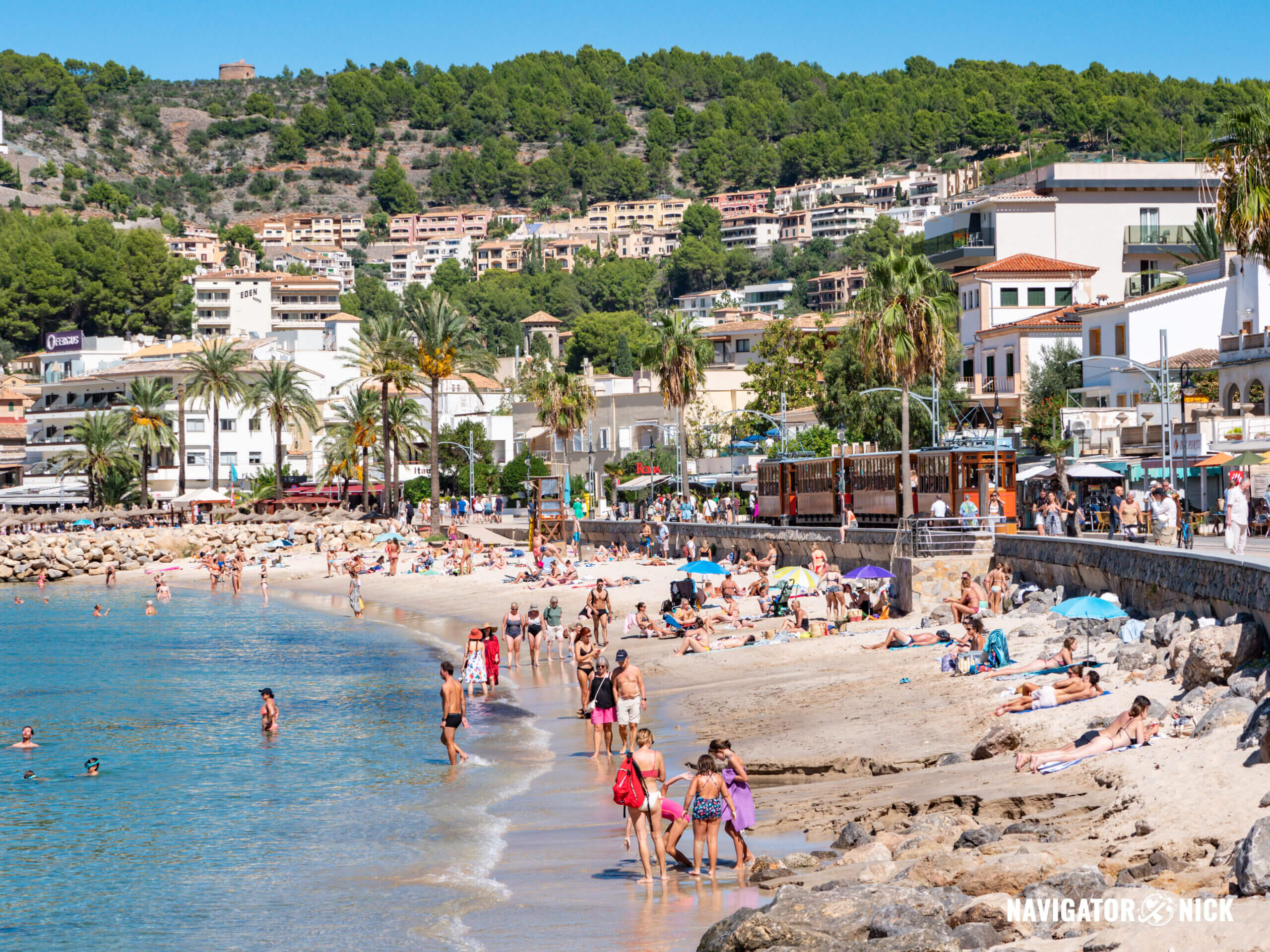
When to go to Palma de Mallorca, Spain
The best months to visit Mallorca, Spain, largely depend on your preferences for weather, activities, and crowd levels. There is not a bad time to go!
Generally, the most popular time to visit Mallorca is during the summer months, from June to August, when the weather is very warm and sunny, and the island is buzzing with tourists enjoying the beaches and outdoor activities.
My favorite time to go to Europe is September. The weather is still warm (think beach weather) and the crowds have died down! However, there is no bad time to visit Mallorca.
Where to stay in Palma de Mallorca
My favorite place on the entire island to stay at is Rondaia Luxury Suites and Vineyard. This secluded and quiet private estate is marvolous!
If soaking in the sun while sipping on house wine is not your thing, use this unique map below to find other hotels, hostels and apartments spread across various sites like Booking.com, VRBO, Expedia, Agoda, Trivago and Hotels.com.
How much time should I spend in Palma de Mallorca, Spain?
TL:DR – at least four nights!
Mallorca, Spain is often looked at a quick holiday weekend trip for Spaniards, Catalonian and other EU cities. But, it’s much more than that. I call it “Hawaii on steroids”.
You see Palma has a little bit of everything and to truly get the most of your island visit, you need at least four nights.
Ideally, you will spend your time on the island of Mallorca in two different regions. Mallorca, Spain, is divided into several distinct areas and regions, each offering its own unique attractions, landscapes, and cultural experiences.
Here are some of the main areas and regions of Mallorca:
1. Palma de Mallorca: As the capital city of Mallorca, Palma is the largest and most populous urban area on the island. It boasts a historic city center with narrow cobblestone streets, picturesque squares, and architectural landmarks such as the Cathedral of Santa Maria and Bellver Castle. Palma also offers a vibrant nightlife scene, shopping districts, and cultural attractions.
2. Serra de Tramuntana: This mountain range stretches along the northwest coast of Mallorca and is a UNESCO World Heritage Site. The Tramuntana Mountains offer stunning landscapes, charming villages, and hiking trails with panoramic views of the sea and countryside. Popular towns in the Tramuntana region include Valldemossa, Deià, and Sóller.
3. Eastern Coast: The eastern coast of Mallorca is known for its beautiful beaches, crystal-clear waters, and coastal villages. Popular resort areas include Cala Millor, Cala d’Or, and Porto Cristo. Visitors can enjoy sunbathing, water sports, and boat trips to explore hidden coves and caves along the coastline.
4. Northern Coast: The northern coast of Mallorca offers rugged cliffs, secluded beaches, and charming fishing villages. Port de Pollença and Alcúdia are popular resort towns known for their sandy beaches, historic centers, and waterfront promenades. The area also offers opportunities for hiking, cycling, and exploring the natural beauty of the Cap de Formentor peninsula.
5. Central Plains: The central plains of Mallorca are characterized by rolling hills, agricultural landscapes, and traditional villages. This region is known for its olive groves, vineyards, and almond orchards. Inca is the largest town in the central plains and is famous for its weekly market, where visitors can find a variety of local products and handicrafts.
6. Southern Coast: The southern coast of Mallorca is home to resort areas such as Magaluf, Palmanova, and Santa Ponsa. These areas are known for their lively nightlife, sandy beaches, and family-friendly attractions. Visitors can enjoy water parks, golf courses, and beach clubs along the southern coast.
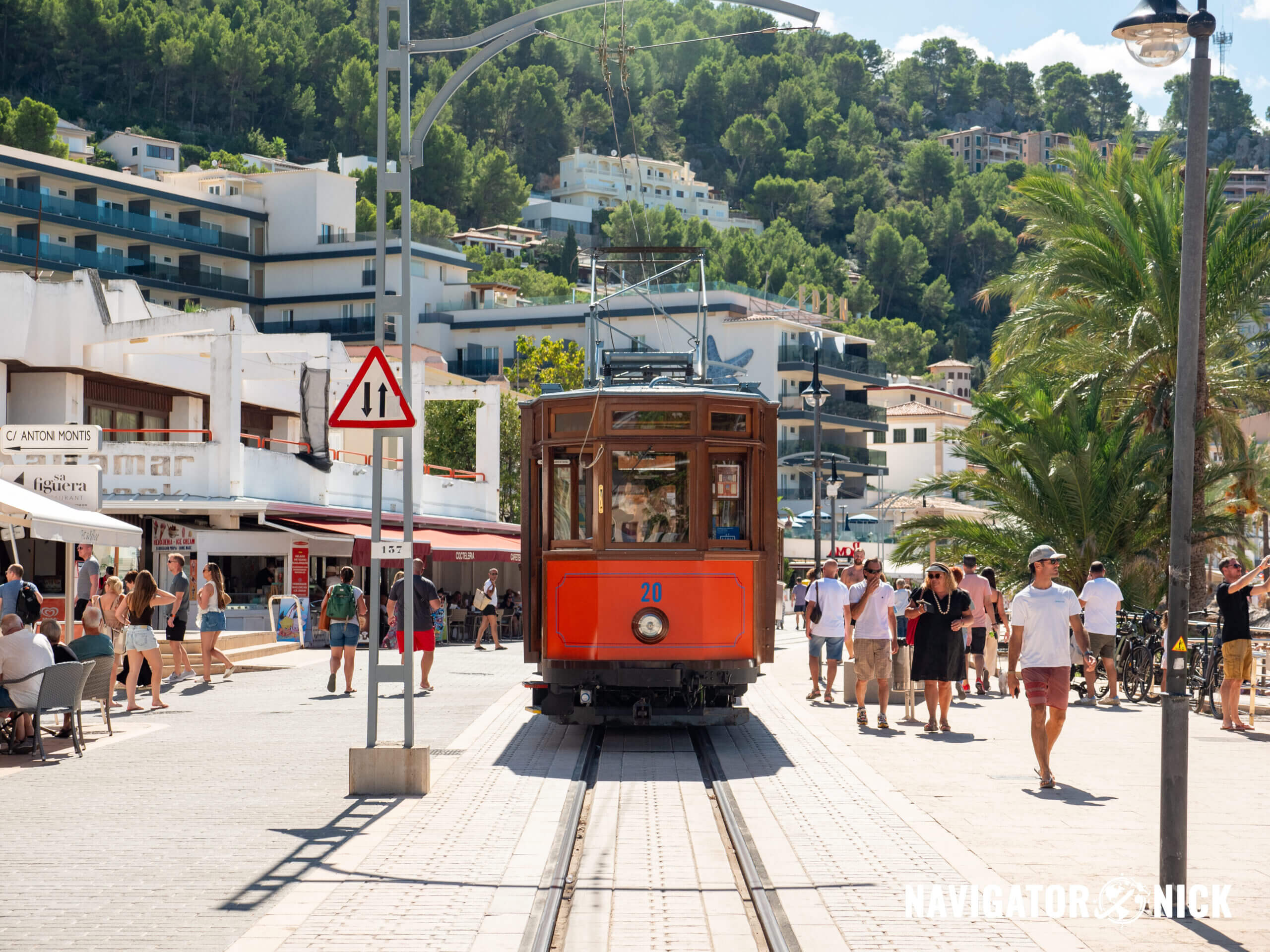
How do I get around Palma de Mallorca, Spain?
Often, the first question I get about Mallorca is, “How do I get around?”
If you enjoy the freedom of being on your own time and avoiding being stuck with a tour group, I highly suggest renting a car.
DiscoverCars.com offers no hidden costs, 24/7 support and 100% free cancellation.
You can compare major car brands like Hertz, Budget, AVIS, Enterprise, EuropeCar, Alamo, SIXT and many others.
Another question I get often is, “How do I get to the city center from the airport?”
The easiest and best option to get to your hotel or the city center of Mallorca is to hire a private driver if you don’t want to rent a car. This is because, the second you step out of baggage claim, you have somebody waiting for you with your name on a sign. Hire a private driver here.
The last thing you want to do after your long journey is to wait around for a bus, train, or a taxi driver.
The cheapest way to get to the city center is via the EMT bus. Single Ticket: €5.00+ depending on your destination.
The EMT Palma bus service operates routes connecting Palma Airport to various destinations across the island, including Palma city center and popular tourist areas like Magaluf and Palma Nova. Travelers can purchase tickets directly from the driver upon boarding.
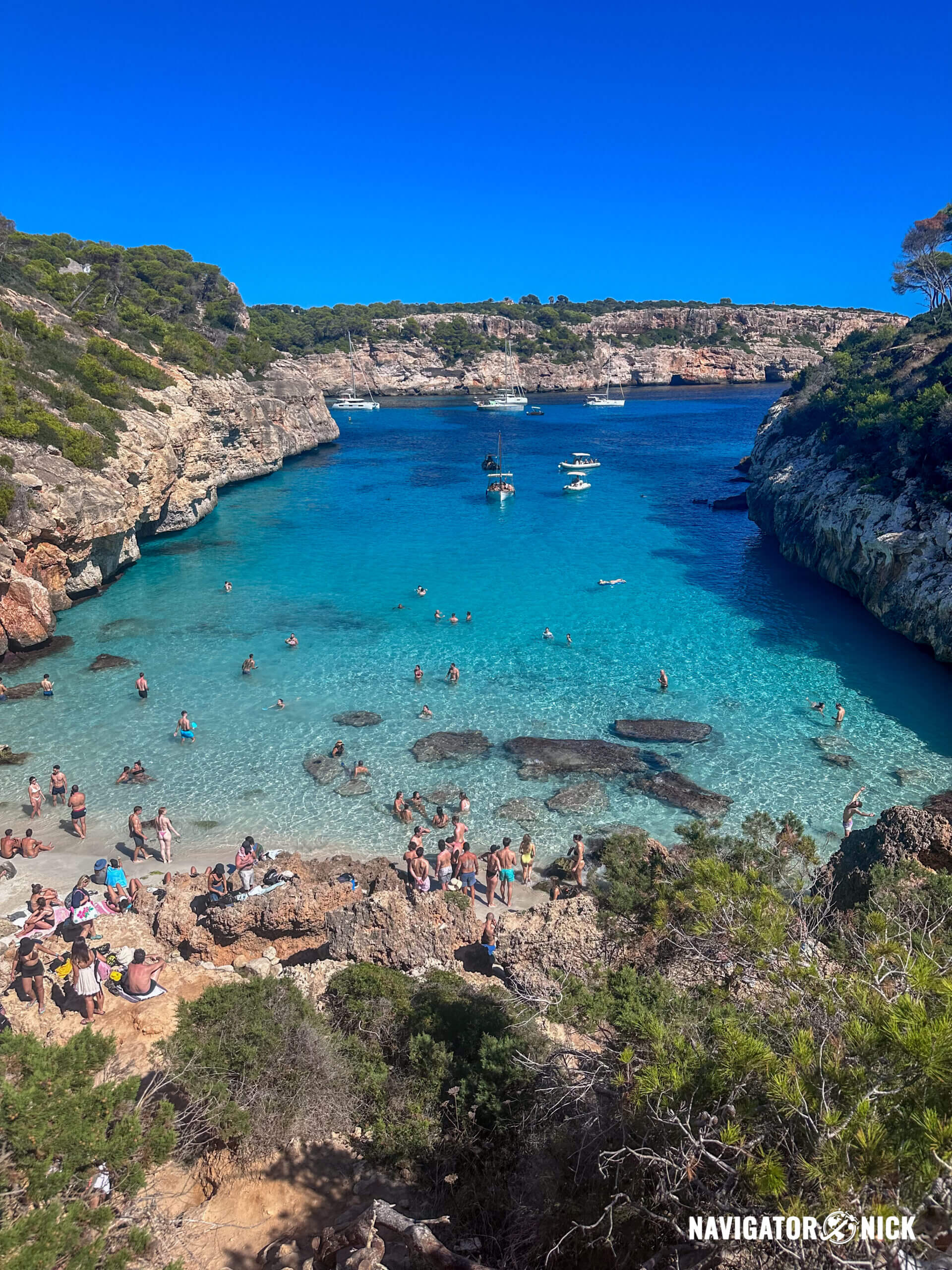
Top things to do in Palma de Mallorca, Spain
The top things to do in Mallorca, an island paradise that offers a perfect blend of natural beauty, cultural richness, and vibrant nightlife! How about exploring the stunning Serra de Tramuntana mountains? Wandering through the historic streets of Palma de Mallorca? Visiting the pristine beaches of Cala d’Or and Alcudia? Or a scenic boat trip to the enchanting Caves of Drach?!
Indulge in local flavors at traditional markets and seaside restaurants, and don’t miss the vibrant nightlife in Magaluf. Mallorca is a diverse destination that promises unforgettable experiences for every traveler.
- Scenic Boat & Tram Ride: Explore Mallorca on a scenic tour by bus, Tren de Soller tram, and boat. Get the best views of the magnificent coastal mountain range of Mallorca from land and water as you drive and sail. Book Here
- Palma Cathedral & City Tour: Explore the most emblematic sites of the beautiful town of Palma on a 90-minute guided walking tour. Stroll through the old town and visit the grand Cathedral of the city. Book Here
- Caves of Drach: Take an excursion to the east coast of Mallorca and explore the caves with a large underground lake where you’ll enjoy a live classical concert. Book Here
- Catamaran & Snorkel Tour: Cruise along the spectacular south coast of Mallorca by catamaran with two stops along the way to swim and snorkel in the turquoise waters while enjoying a delicious barbecue. Book Here
My favorite thing to do in Palma de Mallorca, Spain
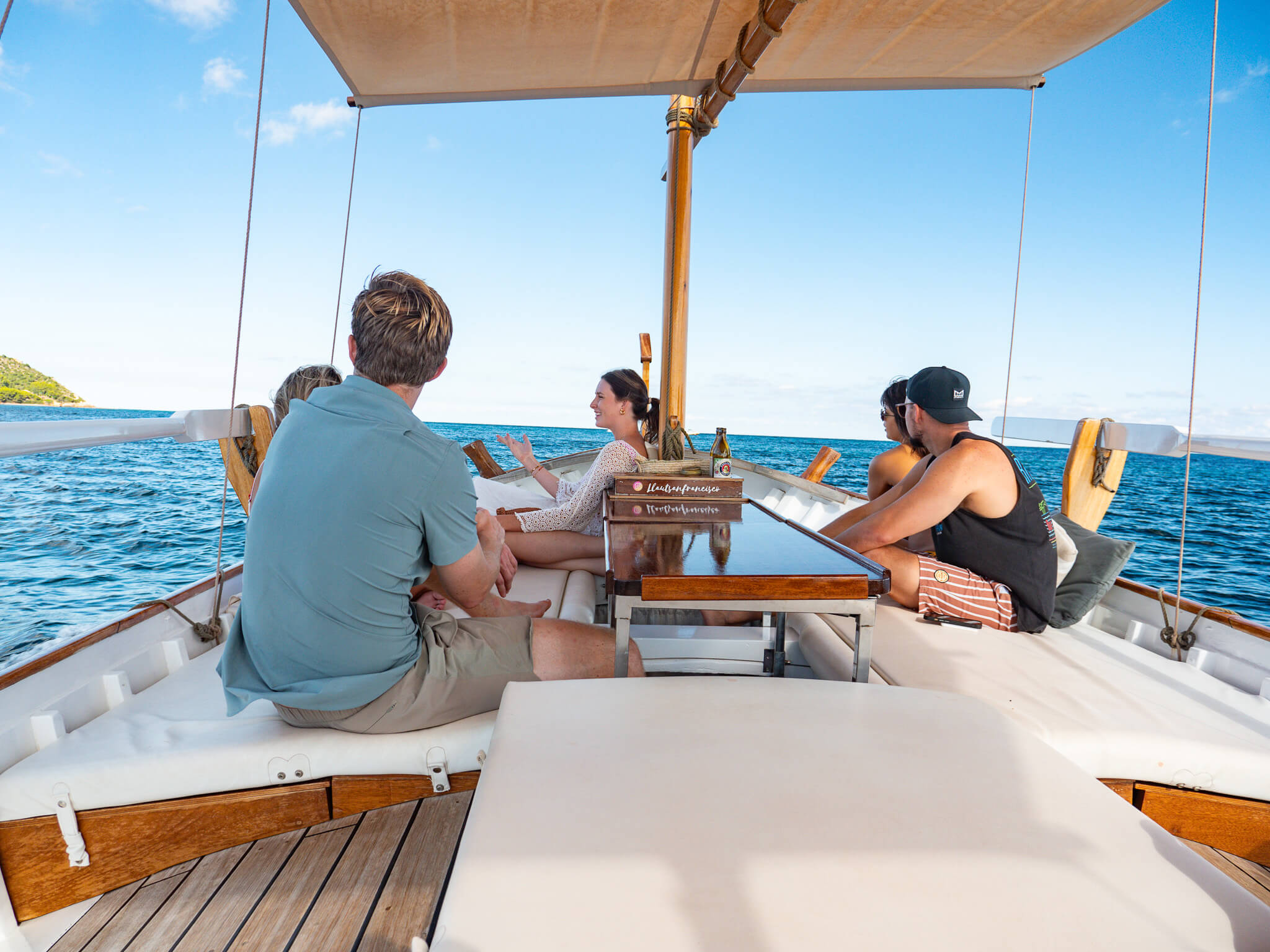
My favorite thing to do in Palma is a traditional Mallorca boat ride!
The boat, made right here in Mallorca, sets sail from the Port de Alcudia in the Northern part of the island.
Swim in the amazing beach in the isle of Alcanada, get off the beaten track and experience the beauty of the beach of “Es Coll Baix”, and enjoy an unforgettable sunset in the Alcudia Bay.
Book Your Traditional Boat Ride by emailing me or tapping “Book Now” below.
I loved sampling fresh cuisine from the island and swimming in the crystal-clear waters.
It was super relaxing and I would do it again and again.
How much money do I need for Palma de Mallorca, Spain?
Budget-wise, Palma is on par with many destinations in the Mediterranean. How much you spend depends on the trip you have in mind – you’ll find everything here from cheap-as-chips hostels to sweet, simple guesthouses and five-star boutique hotels with all the luxe suite and infinity pool trimmings.
You can save euros on flights and room rates by visiting in the low and shoulder seasons.
Restaurants also run the full spectrum. If you want to economize, grab breakfast in one of the city’s bakeries and check out the menú del día (fixed lunch menu), where you’ll often get three courses for as little as €15. Not all sights charge entry so there is plenty here you can do for free.
Average daily costs in Palma de Mallorca
-
- Boutique hotel room for two: from €200
-
- Dorm bed in a hostel: from €30
-
- Self-catering apartment: from €100
-
- Car rental: from €40 per day for a small car
-
- Dinner for two at a top restaurant: €80-100
-
- Coffee and an ensaïmada: €3.50
-
- Menú del día lunch: €15–20
-
- Beer: €3.50
-
- Gallery or museum entrance: €6
-
- Bus tickets to nearby towns and beaches: €2-5
-
- Bike rental: €10 a day
Book Your Trip Now!
Below are my favorite companies I use time and time again when I book my travel.
- Travel Coupons & Discounts – Get Cash Back at places like Hotels.com, Expedia, Travelocity, Priceline and many more with Rakuten. Sign up today & get $30!
- My Favorite Travel Credit Card – Chase Sapphire Prefered. This is by far the best way to book travel and earn miles/points while doing so. Use the Chase Sapphire Prefered for booking 3x travel, 3x dining and 3x on streaming services.
- My Second Favorite Travel Credit Card – In my opinion, the second best travel rewards credit card, the Capital One Venture. Use the Capital One Venture card for 2x the rewards on everyday purchases.
- Rental Cars – Search, compare and save on the best rental car company brands all in one place using DiscoverCars.
- Booking.com – Booking has the widest selection of budget accommodation in the world. In our studies, they constantly found the cheapest rooms. I also like their easy-to-use interface and no-money-down policy.
- Hotels.com – Hotels.com is my second choice for finding hotels. I love their selection and easy to navigate website. Use it often for free hotel stays with OneKeyCash.
- VRBO – The most popular vacation rental site in the US. ✓+2 million rentals worldwide ✓19+ million reviews ✓Secure online payment
- Selina Hostel – This is the best hostel accommodation in the world. Their unique CoLive stays, artwork and location are the best. Not to mention, they are a great value travel brand!
For companies, check out my favorite travel companies section that includes even more of my favorite travel companies that will help you value travel!


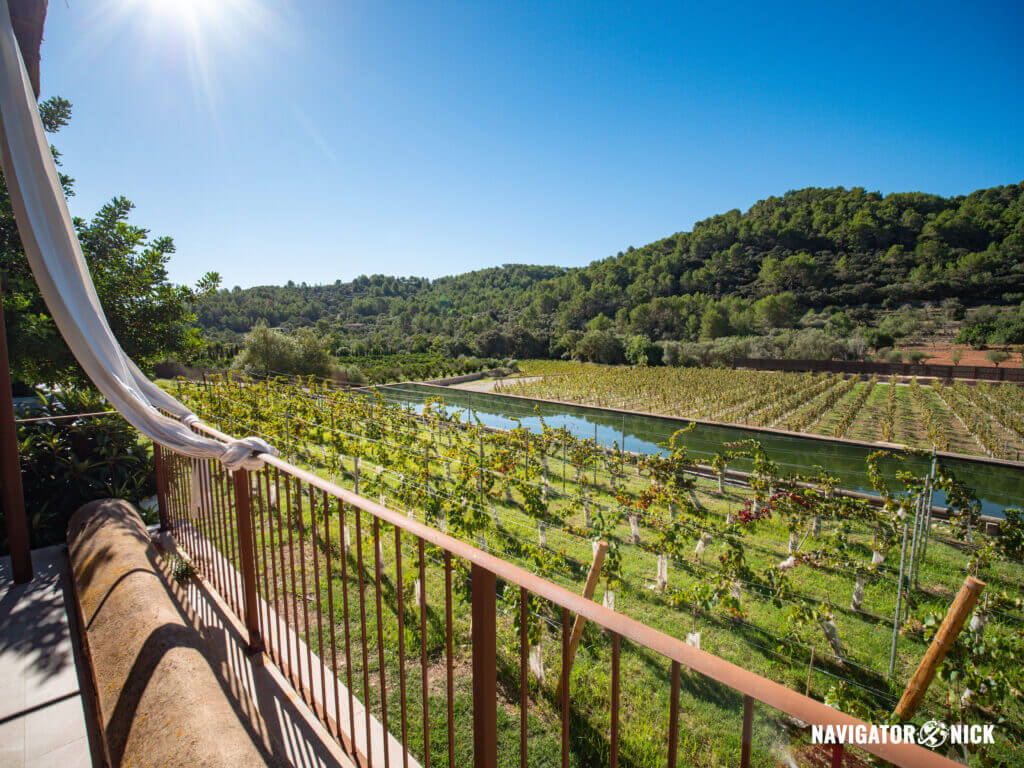

 Previous Post
Previous Post Next Post
Next Post